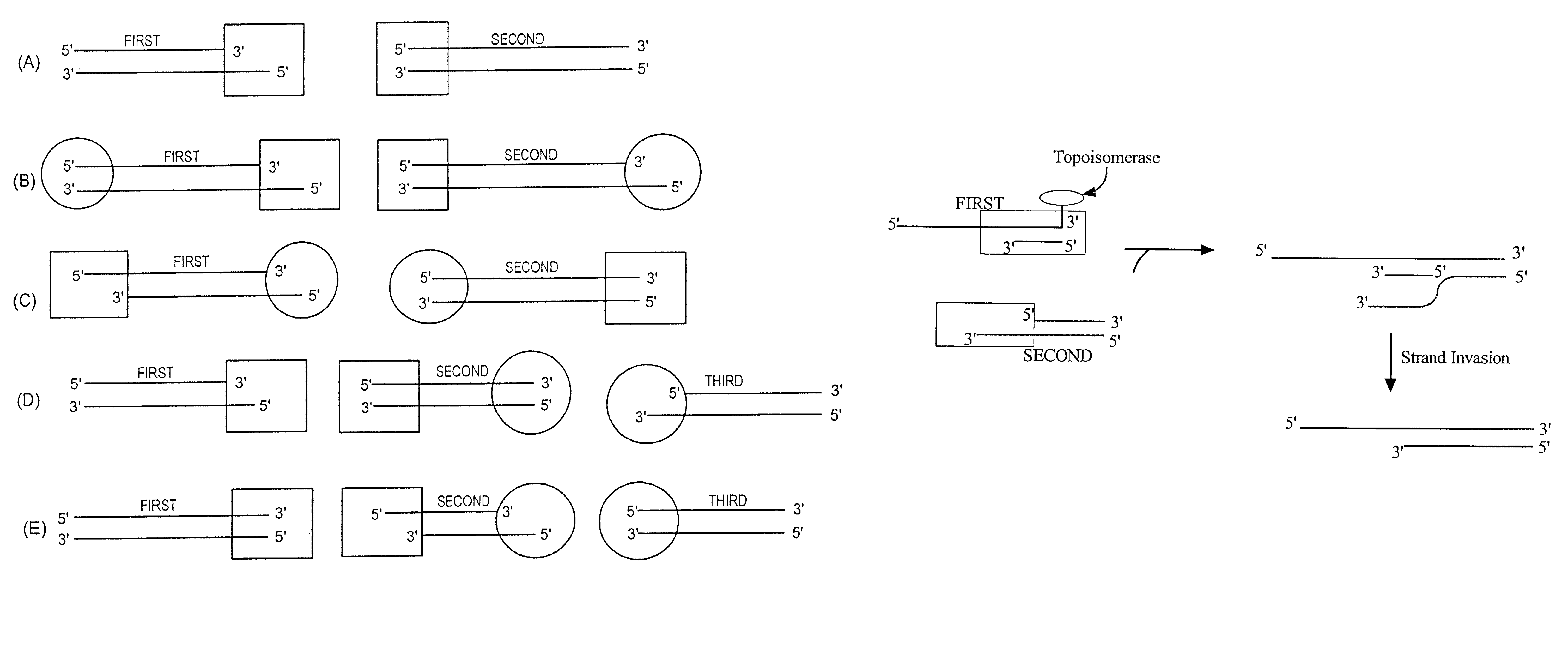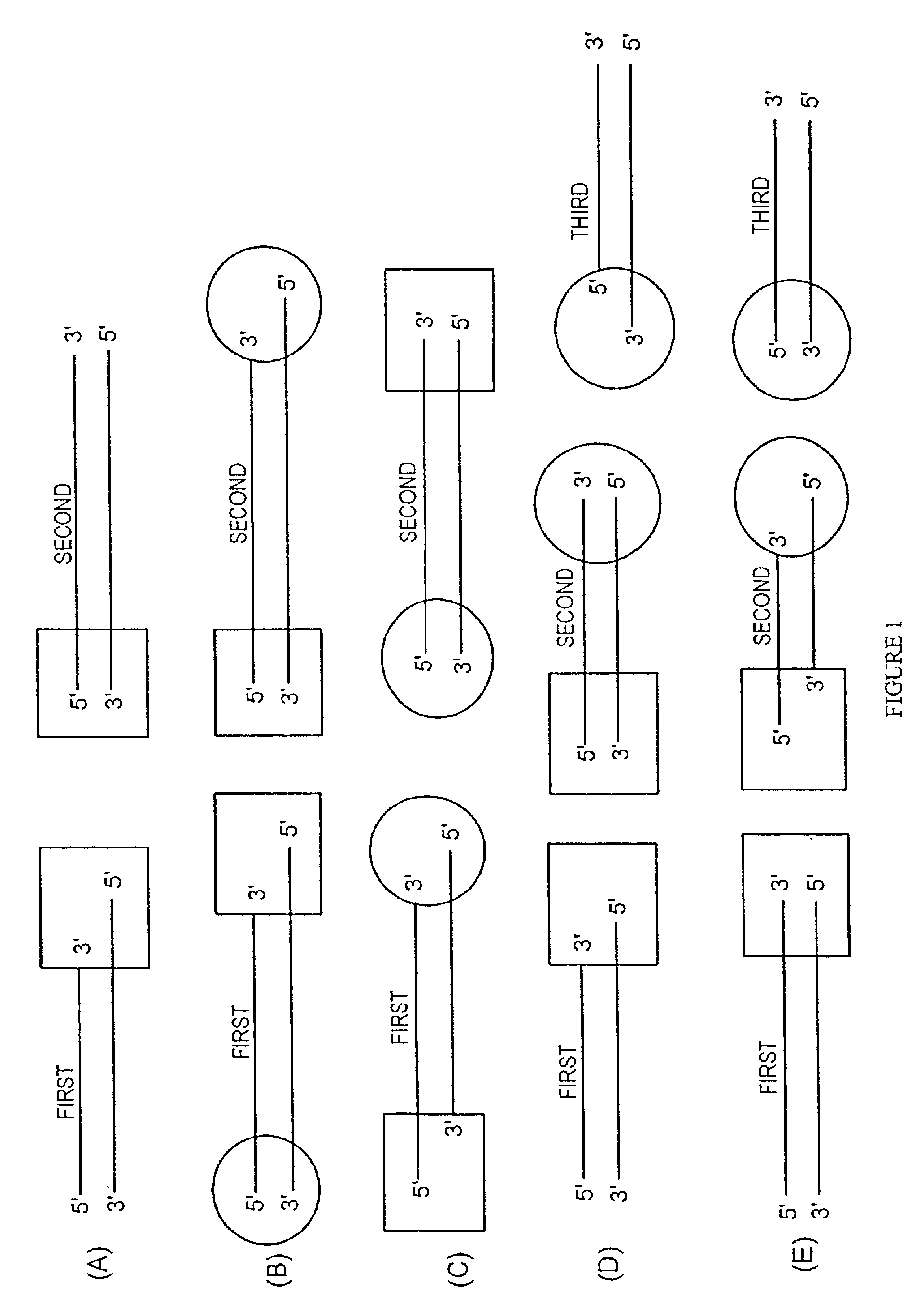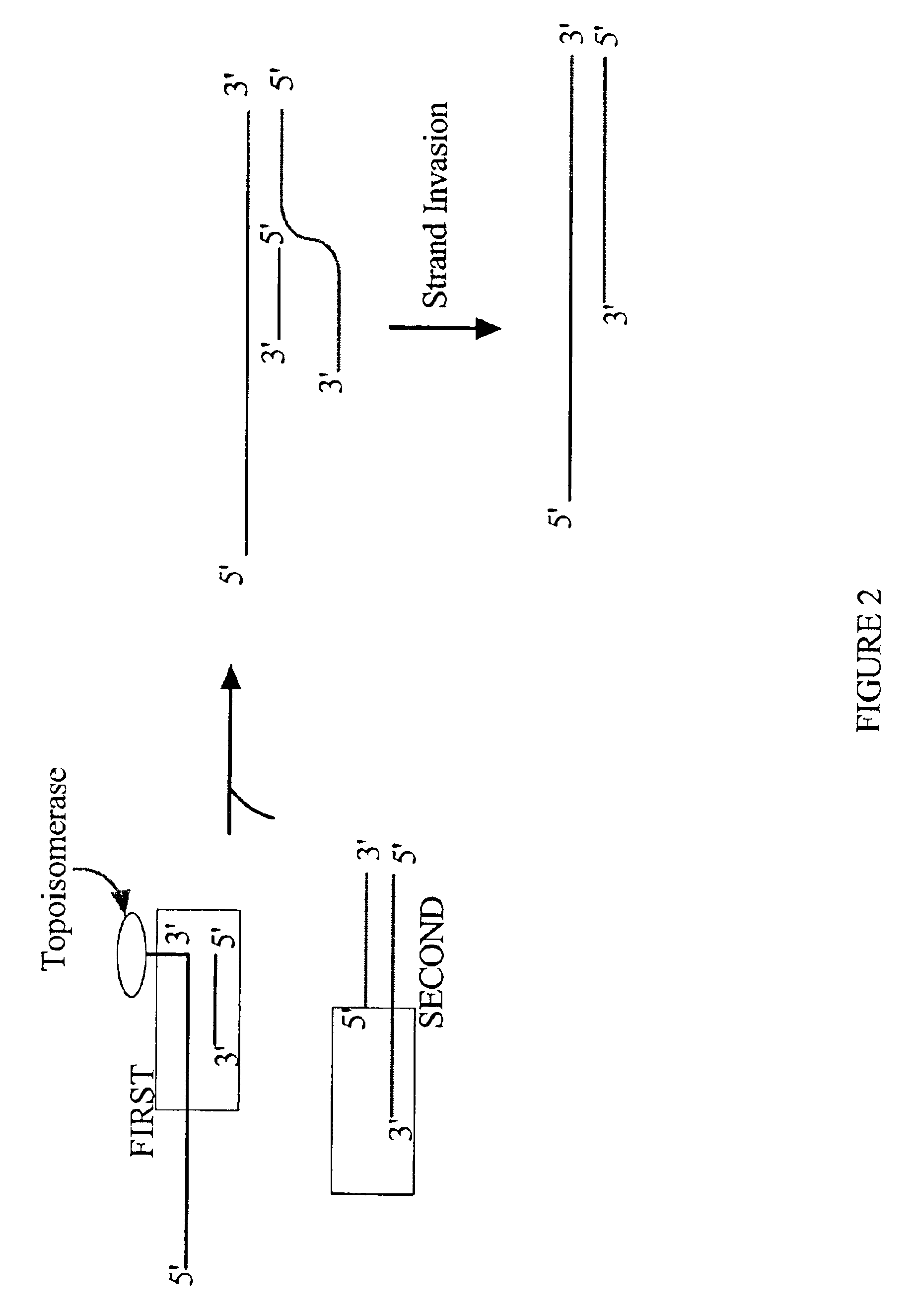Methods and reagents for molecular cloning
a technology of reagents and molecular cloning, which is applied in the field of molecular cloning methods and reagents, can solve the problems of more difficult undertaking to characterize the regulatory elements involved in the expression of such sequences and to properly express, the orientation of inserts obtained using such cloning methods is random, and the investment of time, so as to reduce the laborious screening process and facilitate the effect of topoisomerase-mediated cloning
- Summary
- Abstract
- Description
- Claims
- Application Information
AI Technical Summary
Benefits of technology
Problems solved by technology
Method used
Image
Examples
example 1
[0171]In a preferred embodiment of the present invention, a topoisomerase-charged ds nucleic acid molecule is made by first obtaining a commercially available cloning vector. One such vector is pUni / V5-His version A, (Invitrogen Corp, Carlsbad, Calif.), a circular supercoiled vector that contains uniquely designed elements. These elements include a BGH polyadenylation sequence to increase mRNA stability in eukaryotic hosts, a T7 transcription termination region, an R6Kγ DNA replication origin and a kanamycin resistance gene and promoter for antibiotic resistance selection. Additionally, pUni / V5-His version A contains a multiple cloning site, which is a synthetic DNA sequence encoding a series of restriction endonuclease recognition sites. These sites are engineered for cloning of DNA into a vector at a specific position. Also within the vector's multiple cloning site is a loxP site inserted 5′ to the endonuclease recognition sites thereby facilitating Cre recombinase-mediated fusion...
example 2
[0188]As an example of the application of the present invention to another plasmid, pCR® 2.1, (FIGS. 4 and 12), was modified to create a topoisomerase I adapted vector with a custom single stranded sequence.
[0189]The pCR® 2.1 plasmid is 3.9 kb T / A cloning vector. Within the sequence of this vector are many uniquely designed elements. These elements include an f1 origin, a Co1E1 origin, a kanamycin resistance gene, an ampicillin resistance gene, a LacZ-alpha fragment and a multiple cloning sequence located within the LacZ-alpha fragment allowing for blue-white selection of recombinant plasmids. The multiple cloning sequence, (FIG. 4) of the pCR® 2.1 plasmid contains; numerous restriction sites, including but not limited to, HindIII, SpeI and EcoRI; M13 forward and reverse primers and a T7 RNA polymerase promoter.
[0190]Construction of the topoisomerase I charged vector possessing a custom single stranded sequence consists of endonuclease digestion followed by complementary annealing o...
example 3
[0202]The present invention is particularly useful in the directional insertion of PCR products into vectors constructed according to the present invention. In the PCR amplification of the desired insert, the PCR primers are designed so as to complement identified sequences of the insert(s) that are to be directionally cloned into the topoisomerase-charged ds nucleic acid vector of the present invention. The primer designed to bind upstream of the DNA's coding strand is modified with an additional complementary nucleotide sequence on its 5′ end. The resulting PCR product will possess a complementary sequence allowing single stranded overhang mediated directional insertion into the topoisomerase-charged ds nucleic acid cloning vector of the present invention and subsequent expression of the product.
[0203]One embodiment comprises introducing to a donor duplex DNA substrate a single stranded overhang site by PCR amplifying the donor duplex DNA molecule with the 5′ oligonucleotide prime...
PUM
| Property | Measurement | Unit |
|---|---|---|
| temperature | aaaaa | aaaaa |
| total volume | aaaaa | aaaaa |
| temperature | aaaaa | aaaaa |
Abstract
Description
Claims
Application Information
 Login to View More
Login to View More - R&D
- Intellectual Property
- Life Sciences
- Materials
- Tech Scout
- Unparalleled Data Quality
- Higher Quality Content
- 60% Fewer Hallucinations
Browse by: Latest US Patents, China's latest patents, Technical Efficacy Thesaurus, Application Domain, Technology Topic, Popular Technical Reports.
© 2025 PatSnap. All rights reserved.Legal|Privacy policy|Modern Slavery Act Transparency Statement|Sitemap|About US| Contact US: help@patsnap.com



